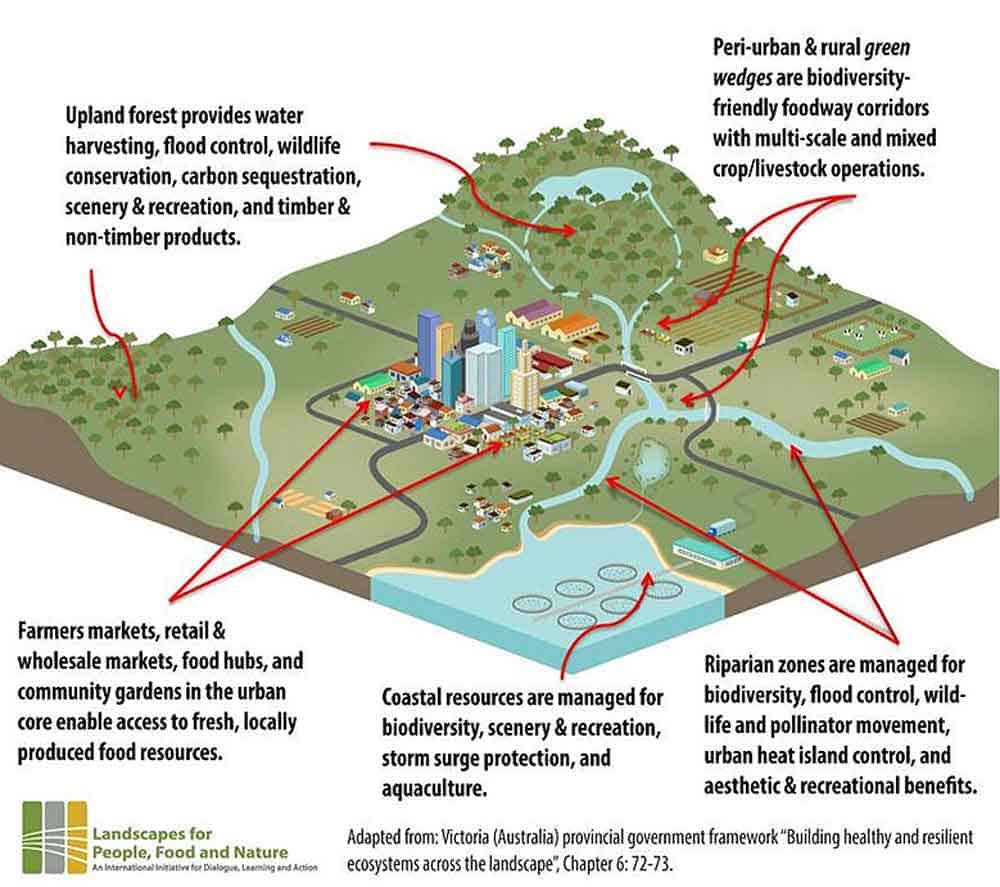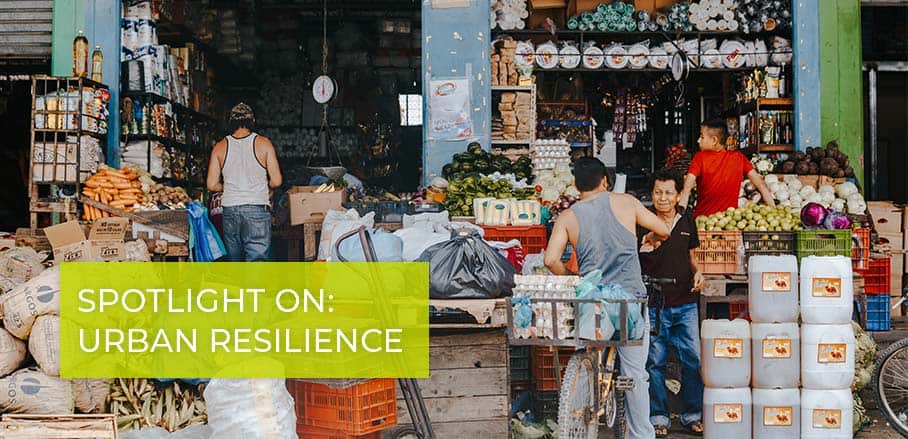Beyond Urban: City-Region Food Systems for Resilient and Sustainable Development
A large share of the world’s population lives in urban areas, making cities a major cause of climate change. Food is especially relevant in this regard, calling for strategies that make food systems contribute to urban resilience. How this may look like can be seen when looking at the City Regions Food System presented by Michela Carucci, Roman Malec, and Guido Santini.
Addressing Food Systems at Urban and Regional Level
Most of the global strategies on climate adaptation and mitigation in cities focus on how to make clean energy and clean transportation the new norm. Whilst, efforts towards risk-sensitive sustainable food systems planning are still overlooked. Nevertheless, cities account for 70 per cent of global carbon dioxide emissions of which food is among the top five largest contributors. The global food system emits 21-37 per cent of the Earth’s greenhouse gases, with pre- and post-production activities included. A recent analysis suggests that 2.5 billion people, living in over 1,600 cities, will experience declining agricultural outputs, posing a tremendous challenge for residents and local authorities.
This decline could set off a chain-reaction that leads to increased food prices and reduced food security in many cities around the world. Meanwhile, the route from farmer to urban consumer is a long and winding one: climate change related impacts can disrupt it – be it crop production, transportation, processing, or retail. This results in food shortages especially after a major climate-related hazard. With 70 per cent of the global food supplyintended for urban food markets, cities are especially vulnerable to climate shocks and stresses.
At the same time, this highlights the importance of cities as actors in the battle against climate change and in developing resilience strategies. 60 per cent of the area expected to be urban by 2030 is yet to be built. Thus, planning resilient and sustainable food systems creates significant opportunities for climate resilience, mitigation, and adaptation, while, at the same time, generating jobs and improving food and nutrition security within the rural-urban spectrum.
A Global Partnership on Sustainable and Resilient City Region Food Systems
The Food and Agriculture Organization of the UN (FAO), through the financial support of the German Government, implement the City Region Food Systems Programme and advocates for food systems intervention strategies to build climate resilience in cities and nearby peri-urban areas.
With its focus on food systems, the programme proposes an innovative approach to assess climate risks and strengthen the resilience of cities and connected peri-urban and rural areas. It aims at improving capacities of local governments and food stakeholders. With a better understanding of the food system, its main actors, and its exposure to climate related risks, they can make informed decisions, plan interventions, and prioritise investments that reduce its vulnerability. The project, global in its nature, is implemented in four city regions: Kigali (Rwanda), Colombo (Sri Lanka), Antananarivo (Madagascar), and Tamale (Ghana). It is realised jointly with RUAF, the Water, Land, and Ecosystems (WLE) Programme, and Laurier University – a global partnership on sustainable agriculture and food systems.

© Landscapes for People, Food and Nature
The programmes build on three main pillars:
- Systemic approach. The programme takes a food systems approach that enables an understanding of the interactions and knock-on effects between impacts at any one stage in the food value chain/s, as well as how the food system as a whole is impacted by events within any one of its sub-systems. All of these elements are affected by climate shocks and stresses.
- Territoriality. The programme is specifically implemented within ‘city regions’, defined as “a larger urban centre ‒ or conglomeration of smaller urban centres ‒ and the surrounding and interspersed peri-urban and rural hinterland”. Food is that functional bond that can help overcome the urban-rural dichotomy and promote sustainable planning at territorial level while building climate resilience.
- Inclusive governance. Given its multidimensional nature, food, and nutrition security requires “place-based” actions through integrated multi-level governance. Its foundation is qualitative and quantitative evidence and collaborations of food actors that connects national and local governments.
A climate risk assessment of this kind, as implemented for example in Toronto and Baltimore, is aimed at strengthening cities’ capacities to anticipate, absorb, accommodate or recover and adapt from climate change induced disasters in a timely, efficient, and sustainable manner while investing in transformative actions to reshape current development pathways.
There are a set of strategies that can be put in place by cities and regions to improve their climate resilience and enhance food and nutrition security. These include:
- investing in early warning systems, risk transfer mechanisms (social protection and insurance), and climate risk-proof grey infrastructure
- promoting climate resilient good practices at farm level and along the value chain
- boosting nature-based solutions (including multifunctional systems such as agroforestry),
- introducing risk driven policies and planning processes
- planning and preparing emergency responses in close collaboration with the private sector and civil society organisations working
Connecting Global Agendas
Climate risk assessments of food systems and risk-informed planning should be at the core of policy, programme, and practice designs of cities, regions, and countries. Vertical collaborations, where organisations share their responsibilities, resources, and performance information to serve similar ends, among national and local governments, in partnership with the private sector as well as civil society, are of paramount importance to effectively respond to people’s demands for nutritious and accessible food, climate action, and social equity in line with the objectives of the overarching 2030 Agenda for Sustainable Development, the Paris Agreement, the Sendai Framework for Disaster Risk Reduction, and the New Urban Agenda.
